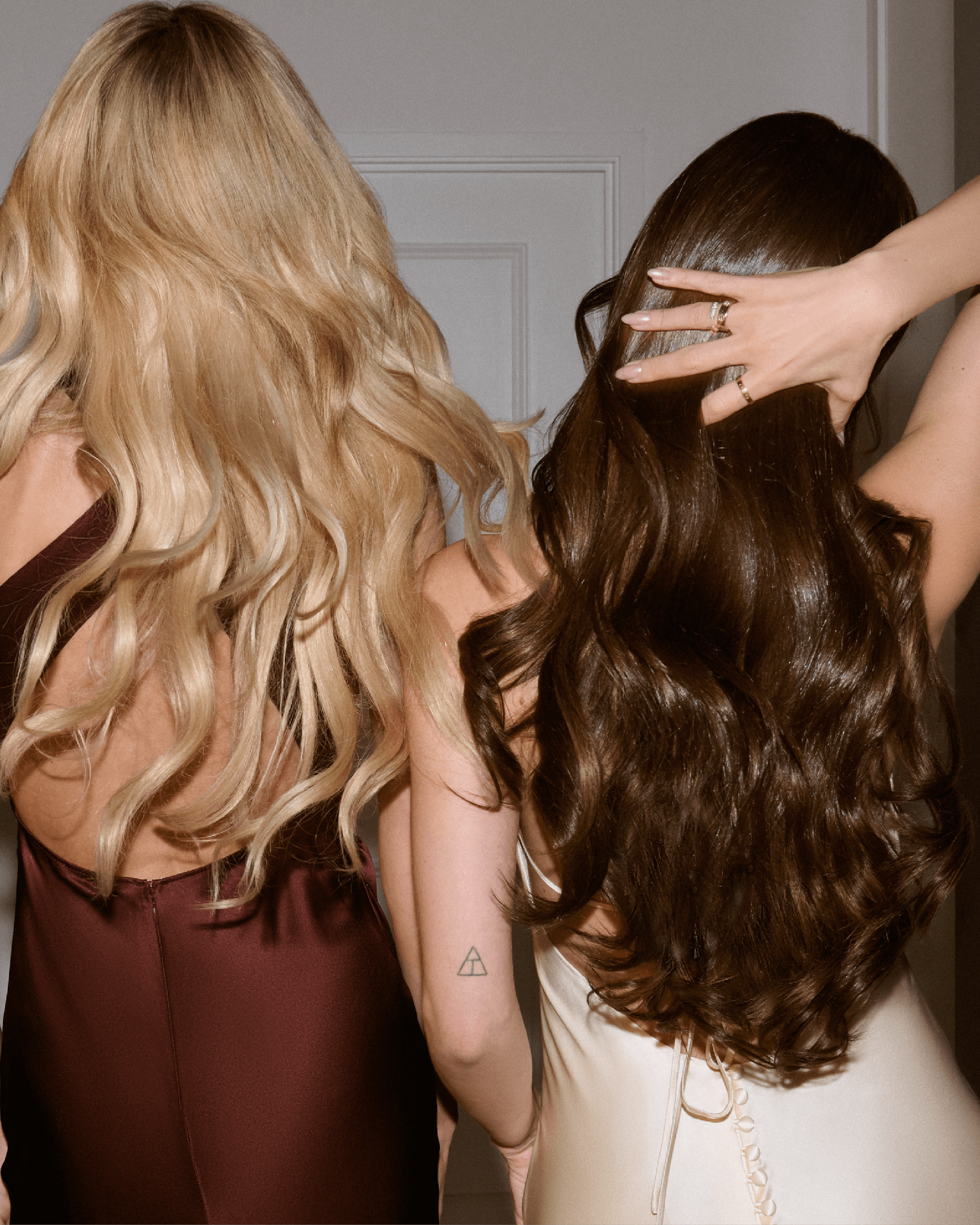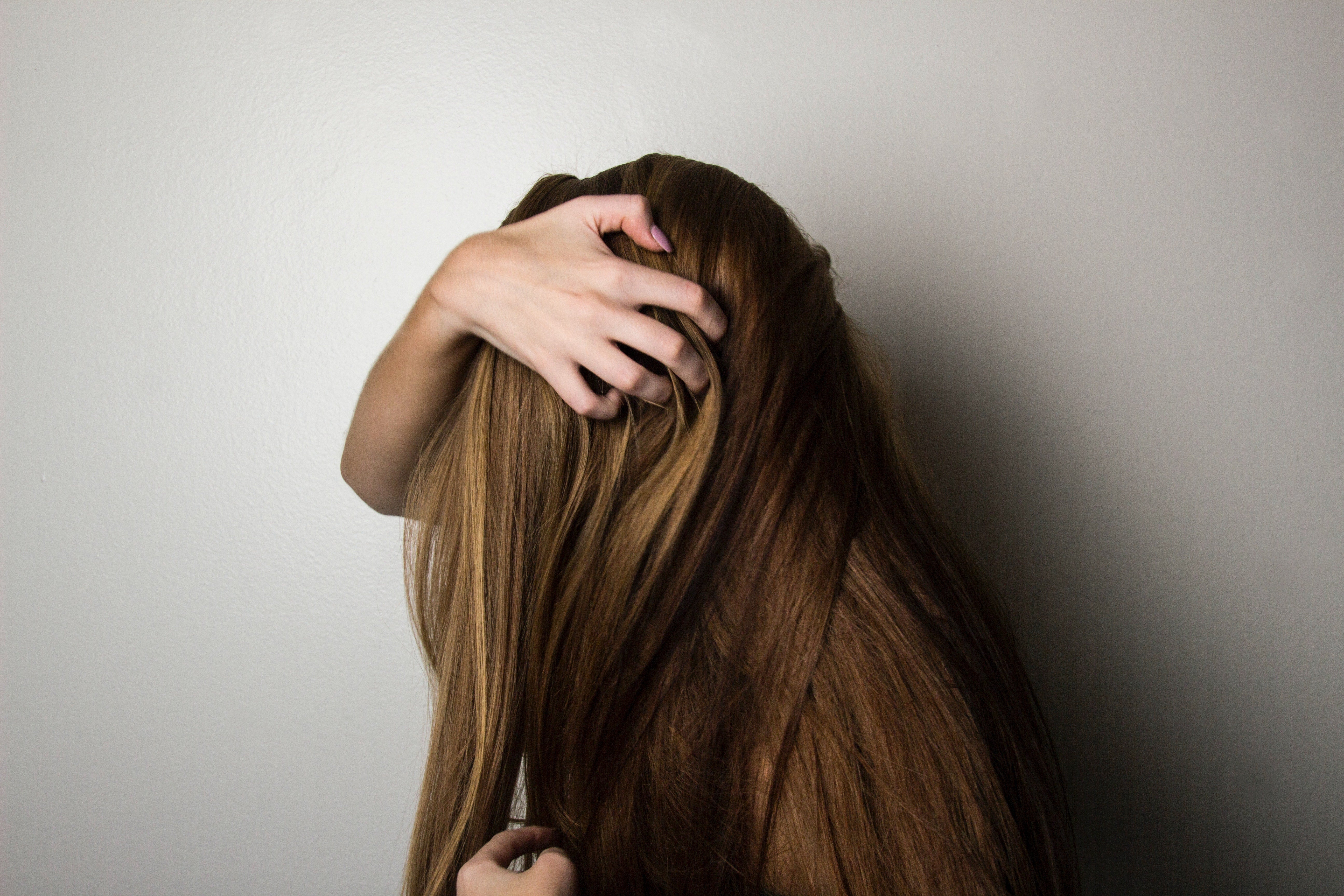You might be thinking that this is just another generic blog post listing the top 10 benefits of a leave-in conditioner.
But it's not, and I'll tell you why.
I, too, have been searching the internet for a reliable site that can answer the numerous questions I have concerning the benefits of a leave-in conditioner. And while I have discovered several of them, none of them provide the complete set of facts I am looking for.
So, I've listed all of the benefits of leave-in conditioner that have been supported by science in this article and provided advice as to what leave-in conditioner is best for natural hair.
Detangles Hair Like a Pro
Why use leave-in conditioner in the first place?
The main purpose of leave-in conditioners is to help detangle hair by coating each strand with a layer of conditioning agents. This not only helps reduce breaking but also makes brushing and combing your hair much simpler.
The American Academy of Dermatology reports that hair that is thinning or falling out is more prone to breakage, split ends, and frizz, so protecting it with a leave-in conditioner or detangler is a good idea.
READ NEXT: The Leave In Conditioner DIY That Seriously Helps Hair
Adds Shine
Want hair that's healthier and more beautiful than ever before? To get shiny, healthy hair, use a leave-in conditioner.
These wonderful products have polymers and silicones that cover the hair shaft gently, reducing frizz and improving shine.
Furthermore, conditioners work to improve shine and color retention by smoothing the cuticle scales atop the hair shaft, reducing friction, and increasing light reflection. This information comes from a study that appeared in the Indian Journal of Dermatology which only solidifies the benefits of leave-in conditioner use.
ALSO READ: How to Use Leave-In Conditioner
Frizz-Free Forever
Say goodbye to unruly locks and hello to smooth, manageable hair. By adding the necessary moisture and weight to your hair, leave-in conditioners are particularly effective at taming frizz.
A Swedish master's thesis in materials chemistry I read suggested that improper distribution of moisture in the hair was to blame for its propensity to frizz. The study's author spoke with a number of professional hairstylists, including one named Victor Noblesse, who confirmed that using leave-in conditioners in between washes controls frizz.
PRO TIP: 10 Frizzy Hair Home Remedies You Can Try This Weekend
Protects Hair from Heat Styling
We all love transforming our hair with heat styling tools, but the damage they can cause is no joke. Enter leave-in conditioners, the knights in shining armor for your precious strands.
The use of leave-in conditioners creates a protective barrier between your hair and the scorching heat, shielding your locks from dryness, breakage, and dreaded split ends.
Blow dryers are frequently used to dry hair. However, continued use breaks down the hair strand.
A study published in 2023 in Degradation and Stability of Polymer Based Systems found that blow-drying conditioners and leave-in conditioners were both effective in protecting hair from the thermal styling tools and ultraviolet rays that are part of everyday hair care.
RELATED: Does Heat Protectant Really Work? Well, This is What Happens When You Don't Use it.
Preserve the Vibrancy of Color-Treated Hair
Color-treated hair deserves extra love and care, and leave-in conditioners step up to the plate. These products deposit pigments onto your hair shaft, safeguarding your color from premature fading caused by harsh shampoos and styling products.
According to research published in the Journal of the Society of Cosmetic Chemists in 1993, hair of both natural and chemically-treated varieties was less damaged when conditioner was applied after shampooing.
This only proves all the more how the application of leave-in conditioner everyday benefits your hair especially if it's color-treated. Wave goodbye to dullness and hello to long-lasting, vibrant color!
PRO TIP: 10 Scalp Health and Hair Growth Tips You Can Do at Home
Split Ends No More
Split ends—what do leave-in conditioners do about 'em?
Hair care practices and environmental factors including blow drying, straightening, and even rubbing your hair to dry using a towel can all contribute to split ends. Hair care products containing chemicals are another common culprit.
Leave-in conditioner cannot heal split ends, but it can help to prevent them from getting worse. So how does leave in conditioner work to reduce split ends?
Conditioners and leave-on treatments reduce interfiber friction, making hair easier to comb and reducing split ends, as reported in a research published in the International Journal of Trichology.
It can also help to smooth the hair cuticle, which can make split ends less noticeable. Say "adios" to split ends and "hello" to glorious, healthy locks
READ NEXT: How To Cut Your Hair At Home
Silky Smooth Strands
Does leave in conditioner work in dry and lifeless hair? Short answer: Yes. Long answer: Leave-in conditioners align the hair, improving the surface's ability to reflect light and giving it a shiner appearance.
So, indulge your senses with irresistibly soft and silky hair. Bask in the glory of hair that reflects light evenly, exuding an enviable sheen and velvety texture.
POPULAR: Hair Washing Hacks For Healthier Hair
Boost Your Hair's Body and Bounce
You may add volume and bounce to your hair using a leave-in conditioner.
The conditioners work by covering each hair with a thin layer, closing the cuticle and making the hair appear fuller. This has the dual benefit of taming unruly locks and making your hair appear thicker and fuller.
It's crucial to find a leave-in conditioner that works well with your hair type among the numerous on the market. For those who have fine hair, selecting a leave-in conditioner that doesn't add excess weight is essential.
A stronger leave-in conditioner that aids in curl definition may be what you need if your hair is particularly thick or curly.
PRO TIP: Is Silicone Bad For Hair? We Answer All Your Questions And Concerns
Make Styling Effortless and Enjoyable
Easily manageable hair is the same as soft, easily finger-combed hair. Styling curly or textured hair can be a daunting task, but leave-in conditioners come to the rescue.
They enhance manageability by making your hair easier to brush and comb, reducing the risk of breakage. Use a leave-in product during wet combing if your hair is curly.
Embrace your unique hair texture and style it with confidence!
RELATED: 7 Hair Styling Tools You Need To Own
Safeguard Your Hair from Environmental Stressors
Every day, our hair fights off the effects of the sun, wind, and pollution.
It is widely believed that the addition of protein hydrolysates (PHs) to hair-care products can "repair" damaged hair by shielding it from further chemical and environmental harm.
Leave-in conditioners, thankfully, serve as a barrier that stops your hair from drying out and becoming brittle. Feel secure in the knowledge that your hair is protected from the elements when you go outside.
READ NEXT: 5 Ways to Keep Brown Hair From Fading
Bonus Track: Which Products Benefits Your Hair the Most?
Leave-In Conditioner vs Moisturizer
Hair moisturizers and leave-in conditioners are two of the most popular options in the hair care market. They both nourish and enhance hair, but there are important differences.
Leave-in conditioners are great for fine hair because of their lightweight formulas. Their capacity to hydrate without weighing down delicate strands is remarkable.
However, hair moisturizers provide significant moisture for dry hair and may weigh down fine or thin hair because of their thicker consistency.
Leave-in conditioners and hair moisturizers rely on your hair type and demands. Lightweight leave-in conditioners benefits weak hair without weighing it down. For dry or damaged hair, a thick hair moisturizer may be your best friend.
Leave-In Conditioner or Hair Oil
Leave-in conditioners and hair oil both benefit hair, but in different ways.
Leave-in conditioners moisturize and detangle. They are water-based and contain a little oil to seal in moisture and protect hair. Leave-in conditioners help dry, damaged, and frizzy hair.
Hair oil moisturizes, protects, and styles. It usually contains coconut, argan, or jojoba oil. Hair oil is useful for all hair types, but it's especially good for dry, damaged, or frizzy hair.
Leave-In Conditioner vs Deep Conditioner
Healthy hair care includes leave-in and deep conditioners. But they're not interchangeable; each has its own function and method of application.
Leave-in conditioners are emollients that are rubbed into wet hair after washing and conditioning. They detangle, gloss, and protect hair from environmental harm. Leave-in conditioners help dry, damaged, and frizzy hair.
Deep conditioners are thicker and more moisturizing. After shampooing and conditioning, they are left on for 20–30 minutes. Deep conditioners moisturize, mend, and control hair. For dry, damaged, or color-treated hair, deep conditioners work well.
Leave-In Conditioner vs Conditioner
While both leave-in and normal conditioners play a role in keeping hair healthy, they do so in distinct ways. Unlike regular conditioners, leave-in conditioners should be left in the hair rather than rinsed away.
It's important to consider your hair type and specific needs when choosing a conditioner. If your hair is dry or damaged, you should probably use conditioner after every wash.
You may want to try a leave-in conditioner if your hair is really fine or oily. If you have curly or textured hair, you might also benefit from using a leave-in conditioner to help define your curls and tame frizz.
POPULAR: How To Hydrate Hair (By Hair Type)
The Final Verdict
Is leave in conditioner good for hair? Yes.
Leave-in conditioner can be good for hair. It can help to moisturize, detangle, and protect hair from damage.
Leave-in conditioners can be used on all hair types, but they are especially beneficial for people with dry, damaged, or color-treated hair.
If you are looking for a way to improve the health and appearance of your hair, a leave-in conditioner can be a great option.
Here are Some of the Best Leave-In Conditioners We Love:

Now, armed with the knowledge of these 10 benefits of a leave-in conditioner, it's time to bid farewell to hair troubles and welcome a lifetime of gorgeous locks.
Say hello to leave-in conditioners, your new haircare soulmates, and unlock the doors to a world where fabulous hair reigns supreme!






